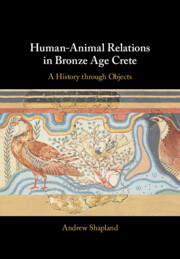Refine search
Actions for selected content:
36 results
Introduction
-
- Book:
- Rebuilding Histories in the Roman World
- Published online:
- 23 November 2025
- Print publication:
- 11 December 2025, pp 1-42
-
- Chapter
- Export citation
Beyond 3D tic-tac-toe: from O to ball and X to boX
-
- Journal:
- Proceedings of the Design Society / Volume 5 / August 2025
- Published online by Cambridge University Press:
- 27 August 2025, pp. 721-730
-
- Article
-
- You have access
- Open access
- HTML
- Export citation
Investigating VR sketching in automotive concept design: advancing spatial, environmental and operational fidelity
-
- Journal:
- Design Science / Volume 11 / 2025
- Published online by Cambridge University Press:
- 26 August 2025, e34
-
- Article
-
- You have access
- Open access
- HTML
- Export citation
6 - Crafting an Audience
- from III - Producing Little Texts
-
- Book:
- The Cultural Politics of Digital User Experience Writing
- Published online:
- 24 July 2025
- Print publication:
- 07 August 2025, pp 139-158
-
- Chapter
- Export citation
Attentionally modulated motor-to-semantic priming: evidence from a property verification task
-
- Journal:
- Language and Cognition / Volume 17 / 2025
- Published online by Cambridge University Press:
- 06 August 2025, e61
-
- Article
-
- You have access
- Open access
- HTML
- Export citation
4 - The Shifting Focus of CALL Research
- from Part I - Laying the Foundations
-
-
- Book:
- The Cambridge Handbook of Technology in Language Teaching and Learning
- Published online:
- 15 June 2025
- Print publication:
- 26 June 2025, pp 58-72
-
- Chapter
- Export citation
Chapter 1 - A Nonlinear Affordance for Exploration
- from Part I - Art as a Complex Process
-
- Book:
- A Complex Systems View on the Visual Arts
- Published online:
- 20 March 2025
- Print publication:
- 03 April 2025, pp 3-10
-
- Chapter
- Export citation
Ritual and the Enemy Body: A New Approach to Modern Atrocity
-
- Journal:
- Comparative Studies in Society and History / Volume 67 / Issue 4 / October 2025
- Published online by Cambridge University Press:
- 24 March 2025, pp. 735-760
-
- Article
-
- You have access
- Open access
- HTML
- Export citation
2 - ‘Welcome to Athens’
-
- Book:
- Centaurs and Snake-Kings
- Published online:
- 16 August 2024
- Print publication:
- 25 July 2024, pp 24-56
-
- Chapter
- Export citation
Human interaction with the physical world: a brief review of studies on affordances
-
- Journal:
- Proceedings of the Design Society / Volume 4 / May 2024
- Published online by Cambridge University Press:
- 16 May 2024, pp. 105-114
-
- Article
-
- You have access
- Open access
- Export citation
Ancestral commons: the deep-time emergence of Bronze Age pastoral mobility
-
- Article
-
- You have access
- Open access
- HTML
- Export citation
3 - Practical Context: From Writing to Multimodal Communication
-
- Book:
- Digital Communication and Media Linguistics
- Published online:
- 18 February 2023
- Print publication:
- 29 December 2022, pp 60-94
-
- Chapter
- Export citation
4 - Small, Familiar Things on Trial and on Stage
- from Part I - Reading Small Things
-
-
- Book:
- Small Things in the Eighteenth Century
- Published online:
- 29 September 2022
- Print publication:
- 29 September 2022, pp 64-76
-
- Chapter
- Export citation
14 - Media Technology, Social Reality, and Discourse
-
- Book:
- Feeling, Thinking, and Talking
- Published online:
- 08 September 2022
- Print publication:
- 15 September 2022, pp 279-300
-
- Chapter
- Export citation
Chapter 6 - Stimulus Evaluation Theories
- from Part II - Emotion Theories One by One
-
- Book:
- Demystifying Emotions
- Published online:
- 11 August 2022
- Print publication:
- 11 August 2022, pp 164-208
-
- Chapter
- Export citation
Digital Artefacts and The Role of Digital Affordance
-
- Journal:
- Proceedings of the Design Society / Volume 2 / May 2022
- Published online by Cambridge University Press:
- 26 May 2022, pp. 11-20
-
- Article
-
- You have access
- Open access
- Export citation
Chapter 9 - The learner, embodied cognition and the affordance of learning environments
- from Part 3 - Learning, wellbeing and the ecology of learning environments
-
- Book:
- The Science of Learning and Development in Education
- Published online:
- 26 May 2022
- Print publication:
- 26 May 2022, pp 232-260
-
- Chapter
- Export citation

Human-Animal Relations in Bronze Age Crete
- A History through Objects
-
- Published online:
- 28 April 2022
- Print publication:
- 12 May 2022
22 - Creativity Development and Culture
- from Part IV - Environments and Contexts
-
-
- Book:
- The Cambridge Handbook of Lifespan Development of Creativity
- Published online:
- 19 November 2021
- Print publication:
- 25 November 2021, pp 480-494
-
- Chapter
- Export citation
5 - What the Situation Affords
- from Part 1 - The Sensorimotor Embodiment of Habits
-
-
- Book:
- Habits
- Published online:
- 24 November 2020
- Print publication:
- 03 December 2020, pp 120-136
-
- Chapter
- Export citation
